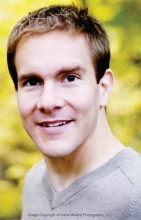ChEMS Seminar: Low-cost Reactor Designs for Photochemical Solar Water Splitting

UC Irvine
Abstract: Particle suspension reactors for solar water splitting are capable of generating H2 at a cost that is competitive with hydrogen produced from steam methane reforming. One reactor design resembles nature’s Z-scheme where two side-by-side and connected photocatalyst reactor beds together drive overall solar water splitting. The photocatalyst particles in each reactor bed also perform a half-reaction with a redox shuttle and therefore, the electrolyte must transport between the beds via a nanoporous gas separator to maintain redox shuttle species in all locations. While this design facilitates separation of H2/O2, and therefore can circumvent formation of an explosive mixture of gases, transport of the redox shuttle between the beds requires active pumping, which equates to significant additional capital expenditures.
Our team is evaluating the feasibility of new reactor designs where the beds are stacked. This generates a true tandem light-absorbing reactor where the theoretical maximum solar-to-hydrogen conversion efficiency is over 50 percent larger than a side-by-side or single light-absorber design. Each bed is projected to be <10 cm tall and therefore, this design also decreases the distance required for redox shuttle transport, eliminating the need for pipes, pumps and forced convection, and cutting the projected reactor capital costs in half.
Using finite-element numerical methods, we have modelled our proposed design in two dimensions and simulated transient mass transport processes, light absorption, photovoltaic behavior and electrochemical kinetics. Results suggest that a reactor operating at a ~10 percent solar-to-hydrogen conversion efficiency can operate indefinitely without any forced convection and can meet the U.S. Department of Energy ultimate cost targets of < $2/kg-H2. Experimentally, we are investigating and characterizing state-of-the-art photocatalyst materials, including Rh,La-codoped SrTiO3 and Mg-doped La5Ti2CuS5O7 H2-evolving particles, and BiVO4 and WO3 O2-evolving particles. We study these materials on many length scales, from single nanoparticles (5 – 2000 nm in diameter) to mesoporous thin films (~10 µm thick) to prototype reactors (inches to feet). Collectively, our efforts represent strides toward achieving a high-level of techno-economic viability in solar water splitting reactors.
Bio: Shane obtained a bachelo'r degree in mathematics, with a minor in computer programming, from Towson University and subsequently worked as a software engineer, community college instructor and high school teacher prior to attending graduate school. Shane obtained an master's degree in nutrition from the University of Maryland, College Park, followed by master's and doctoral degrees in photo-physical inorganic chemistry from Johns Hopkins University, where he worked for Professor Jerry Meyer. He then worked for Professor Nate Lewis as a DOE-EERE Postdoctoral Research Awardee at the California Institute of Technology until 2013. Since that time, Shane has been an assistant professor at UC Irvine in the Department of Chemistry and holds a joint appointment in the Department of Chemical Engineering and Materials Science. His research interests are driven by the pursuit of understanding and controlling energy conversion mechanisms for applications in solar fuel devices, photovoltaics, solar seawater desalination, fuel cells and redox flow batteries. Shane was recently named one of five inaugural Moore Inventor Fellows, is a recipient of a Beall Innovation Award, and was named a Sloan Research Fellow and a Cottrell Scholar. His research group is also supported with funding from the U.S. Department of Energy’s Office of Energy Efficiency and Renewable Energy, the U.S. National Science Foundation’s Chemical Catalysis Program and two collaborative projects by the University of California MEXUS–CONACYT and Research Corporation for Science Advancement.
Host: Allon Hochbaum
Share
Upcoming Events
-
MSE 298 SEMINAR: Toward Predictive Materials Synthesis with Atomistic Simulations and Robust Machine Learning
-
EECS Seminar: GPU Acceleration of Peta-Scale Semantic Search in the AI Era
-
MAE 298 SEMINAR: Topology Optimization – from Research to Broad Industrial Impact
-
CBE 298 Seminar: Physical Biology Strategies for Translational Bioelectrical Interfaces
-
CEE Seminar: Real Solutions in an Imperfect World – Geotechnical Failures and Successes
